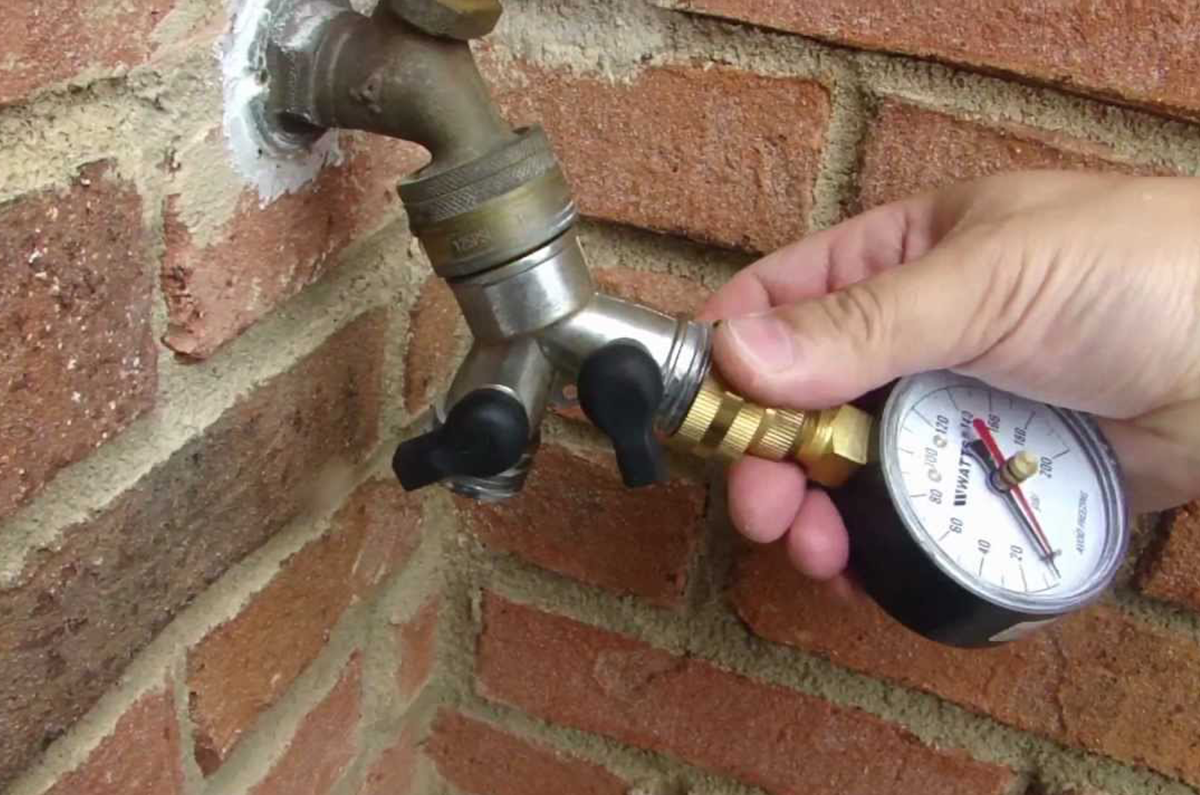Approaches to Tackle Low Water Pressure in Your Home
Approaches to Tackle Low Water Pressure in Your Home
Blog Article
This post on the next paragraphs relating to 10 Reasons for Low Water Pressure in Your House is highly informative. Give it a try and draw your own final thoughts.

Low water pressure in your house can be an aggravating problem, influencing everything from bathing to washing dishes. If you're experiencing weak water flow, there are numerous feasible causes and solutions to explore. In this guide, we'll discuss usual reasons for low water pressure and practical actions to attend to the problem efficiently.
Introduction to Low Tide Pressure
Low water pressure occurs when the circulation of water from your faucets, showers, and various other components is weak than typical. This can make daily tasks a lot more tough and less reliable. Comprehending the root causes of low water pressure is essential to locating the right option.
Typical Sources Of Low Tide Stress
Faulty Pressure Regulators
Stress regulators are responsible for preserving regular water stress in your house. If they malfunction, it can result in low water stress or uneven flow throughout your home.
Local Water Supply Issues
Occasionally, the problem exists outside your home. Municipal water supply issues, such as main line leakages or upkeep job, can briefly lower water pressure in your area.
Pipeline Obstructions
In time, pipelines can end up being clogged with mineral deposits, sediment, or particles, restricting the circulation of water. This is a typical concern in older homes with galvanized steel pipes.
Rust
Deterioration within pipelines can result in leaks and reduced water pressure. Corrosion buildup can restrict water flow, specifically in aging plumbing systems.
How to Diagnose Low Tide Stress
Examining Pipes
Examine visible pipes for indications of leakages, deterioration, or blockages. Pay attention to any unusual sounds, such as banging or rattling pipelines, which can suggest concerns within the plumbing system.
Consulting with a Plumber
If you're not able to determine the source of low water pressure, take into consideration hiring a specialist plumber to conduct an extensive examination. They can determine underlying concerns and suggest suitable services.
Examining Taps and Fixtures
Begin by checking the water stress at various faucets and fixtures throughout your home. If the issue is separated to specific locations, it might indicate localized problems.
DIY Solutions to Take Care Of Low Tide Pressure
Flushing Hot Water Heater
Debris accumulation in the water heater can limit flow and decrease effectiveness. Purging the tank occasionally helps get rid of debris and preserve optimum performance.
Examining Stress Regulator
Ensure that the pressure regulator is operating correctly. Changing or replacing the regulatory authority can assist bring back correct water stress throughout your home.
Cleansing Aerators and Showerheads
Natural resources can accumulate in aerators and showerheads, minimizing water circulation. Get rid of and clean these components consistently to improve water pressure.
Clearing Up Clogs in Piping
For small clogs, try making use of a plumbing snake or chemical drainpipe cleaner to clear blockages in pipelines. Be cautious when utilizing chemicals and follow security guidelines.
When to Call a Professional Plumber
If DIY initiatives stop working to fix the concern or if you suspect significant plumbing problems, it's finest to seek help from a certified plumber. They have the competence and tools to attend to complicated issues safely and efficiently.
Preventive Measures to Preserve Water Stress
Mounting a Pressure Booster
Consider installing a pressure booster pump to enhance water stress in areas with constantly low circulation. This can be particularly helpful for multi-story homes or buildings with high-demand fixtures.
Tracking Water Usage
Be mindful of water use practices and prevent overtaxing the plumbing system. Easy modifications, such as incredible showers and laundry tons, can help maintain ample water pressure.
Regular Maintenance
Arrange routine upkeep for your plumbing system to stop problems such as corrosion, leakages, and obstructions. Attending to small issues early can aid prevent even more considerable repairs later.
Conclusion
Taking care of low water pressure can be irritating, however identifying the underlying causes and applying ideal remedies can restore optimal flow throughout your home. Whether it's cleaning up aerators, inspecting pipes, or consulting with a plumber, taking aggressive steps can ensure a constant supply of water for your everyday requirements.
HOW TO FIX LOW WATER PRESSURE IN YOUR HOUSE (EXPERT GUIDE)
The morning shower lacking any real pressure? Bathtub taking hours to fill? Or maybe you’re dissatisfied with the inadequate performance from your combi boiler?
Then you, like millions of others across the UK, might be experiencing low water pressure.
Fortunately, the good news is that you don’t have to continue living this way. The cause of low water pressure in the home is often quite simple, and you may not even require a plumber to fix the problem.
What causes low water pressure in the house?
If you are experiencing issues with water pressure throughout your home, then you may have one of the problems outlined below.
Most of these problems can be fixed quite easily, but for others, you may need to contact a plumber.
Obstructed Shutoff Valve
If you’ve just bought a new home or recently had building work conducted on your property, there is a chance that your water valves were not fully opened.
If the water valve is partially closed, then you may be restricting the amount of water entering your home. To fix this, simply ensure the valve is fully open.
If the valve appears fully open but you are still encountering reduced water pressure, then the valve may be broken. If this is the case, do not under any circumstances try to fix it without proper training.
Often found under your kitchen sink, a water valve will usually look like a bright yellow handle.
Again, if you believe the water valve is broken, contact a plumber immediately.
Leaks in Your Water Pipes
Leaks are the worst-case scenario when it comes to low water pressure.
If the water pipes are damaged, then this will cause low water pressure, as not all the water will make it to your taps.
After you’ve checked to see if the valve is fully open, you can conduct a leak check of your home. Now, this may seem scary, but it is actually quite simple.
Clogged Water Pipes
Clogged water pipes are one of the most common causes of low water pressure.
These clogs usually build-up when your home is supplied water via iron pipes. Iron is particularly vulnerable to rusting which can then break off and cause an obstruction within your system. You also face the problem of things like dirt, gravel or sand entering creating mineral deposits which further block water flowing from the mains water supply.
Unfortunately, if you suspect that clogged pipes may be restricting your water supply, then you will need to contact a plumber.
In this situation, you will either need to have your pipes removed and cleaned or in more severe cases, you could require a new set of water pipes.
Designer Taps
Designer taps look fantastic, but are they built to be efficient in your plumbing system? Modern taps are built for modern homes and they often have lower flow rates that are specifically designed for use within high-pressure systems.
Install a Water Pressure Booster Pump
If the issue is simply that the mains water pressure supply is too low, the simplest fix is to invest in a booster pump. Found in homes of all shapes and sizes, booster pumps are a relatively cheap option to add extra pressure to your home.
Designed to increase water pressure by passing water into the pump from your mains supply and then ejecting it into your home water system at a higher pressure, a booster pump is a truly simple and effective solution to increasing water pressure.
https://www.anchorpumps.com/blog/the-plumbers-guide-to-fixing-low-water-pressure/

Hopefully you liked our excerpt about Low Water Pressure in the House?. Thank you for finding the time to read our blog post. Those who liked our blog entry please consider to share it. Thank-you for taking the time to read it.
Check It Out Report this page